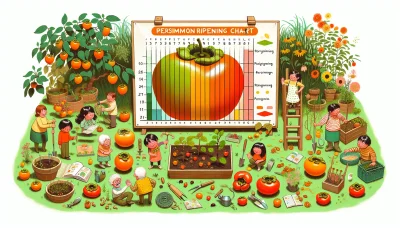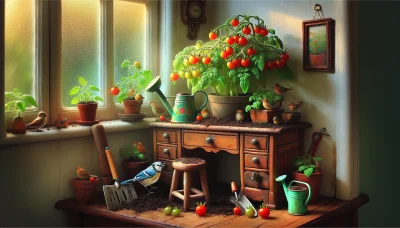May night Quiz
Test Your Knowledge
Question of
Embracing the Beauty of May Nights: A Gardener's Guide
As the spring days lengthen and merge into the balmy nights of May, there emerges a unique opportunity for gardeners to connect with their gardens in a more intimate, serene setting. The enchantment of May nights, with their mild temperatures and the gentle chorus of nocturnal wildlife, offers a magical time for planting, tending, and simply enjoying the garden. This guide aims to inspire you to make the most of these precious evenings, transforming routine gardening into a tranquil and rewarding experience under the starlit sky.
Why Garden on May Nights?
Gardening on May nights presents a unique opportunity to engage with your garden under a different light, quite literally. The cooler temperatures of the evening make it a perfect time to work outside, especially after the heat of the day. This not only makes for a more comfortable gardening experience but also benefits the plants. Watering your garden in the evening reduces evaporation, allowing plants to absorb more water. Moreover, the calmness of the night offers a peaceful setting for gardening, away from the distractions and noise of daytime. Additionally, nighttime gardening in May allows you to observe and enjoy the nocturnal wildlife that visits your garden, providing a deeper connection with nature. Embracing the tranquility and unique conditions of May nights can transform your gardening routine into a serene and productive experience.
Choosing the Right Plants for May Night Gardens
- Moonflower (Ipomoea alba) : A night-blooming species of morning glory that unfurls its large, fragrant white flowers in the evening.
- Night Phlox (Zaluzianskya capensis) : Known for its intense fragrance that becomes stronger at night, it has white and maroon flowers that close during the day and open in the evening.
- Evening Primrose (Oenothera biennis) : This plant produces yellow flowers that bloom in the evening and remain open until the next afternoon, attracting nighttime pollinators.
- Nicotiana (Nicotiana sylvestris) : Also known as flowering tobacco, it has trumpet-shaped white flowers that open in the evening and release a strong, sweet fragrance.
- Gardenia (Gardenia jasminoides) : With its large, creamy white flowers and intoxicating fragrance, gardenias are a perfect addition to any night garden.
- Jasmine (Jasminum spp.) : Known for its powerful, sweet fragrance, jasmine blooms throughout the summer, with some species like J. polyanthum being especially fragrant at night.
Designing Your May Night Garden
Designing a garden that comes alive at night in May requires thoughtful planning and a creative touch. Begin with the layout by envisioning how your space can be best utilized after sunset. Paths should be gently curved, leading the eye and feet through the garden, and consider areas where guests might pause or gather. Plant placement is crucial; opt for varieties that bloom or emit fragrance at night, such as moonflowers, evening primrose, or night-blooming jasmine, positioning them where they can be easily appreciated. Lighting plays a pivotal role in transforming your garden at night; soft, warm lights can highlight trees, plants, and pathways, creating an enchanting atmosphere that encourages exploration and relaxation. By carefully considering these elements, your May night garden will be a magical retreat that delights the senses.
Caring for Your Garden Under the Stars
- Water your garden in the late evening to minimize evaporation and allow for deeper water penetration.
- Prune spring-flowering shrubs and trees after they bloom to encourage healthy growth and flowering for the next season.
- Check plants for pests during the cooler hours of the night when they are most active; use natural predators or organic pesticides to manage them.
- Install soft, solar-powered lights to help navigate your garden at night and to enjoy its beauty after dark.
- Apply mulch to keep soil moisture levels consistent and to reduce weed growth.
- Consider night-blooming flowers to add beauty and fragrance to your nocturnal garden experience.
- Monitor nighttime temperatures and cover sensitive plants if a late frost is expected.
The Magic of May Nights: Success Stories
May nights, with their perfect blend of cool air and moist soil, have long been celebrated by gardeners for their magical touch on the gardens. One such success story comes from Alex, who decided to transplant her delicate peonies under the soft glow of the moonlight. To her delight, the flowers thrived, showing more vibrant colors and fuller blooms than ever before. Similarly, Jordan, an avid vegetable gardener, experimented with nighttime planting of his tomatoes and was rewarded with a bumper crop, attributing his success to the peaceful and cooler conditions that May nights offered. These stories, among many others, underscore the unique benefits that gardening during these serene hours can bring, turning ordinary gardens into lush, thriving havens.
Getting Started with Your May Night Garden
| Step | Description | Tips |
|---|---|---|
| 1. Choosing a Location | Find a spot that receives at least 6 hours of direct sunlight daily. | Observe your garden area throughout the day to identify the sunniest spots. |
| 2. Testing Soil | Test the soil pH and nutrient levels to ensure they meet the requirements of your chosen plants. | Soil testing kits are available at most garden centers. |
| 3. Selecting Plants | Choose plants that thrive in your climate zone and match the sun exposure of your garden. | Consider night-blooming flowers like moonflower, evening primrose, and night phlox for added beauty. |
| 4. Designing Your Layout | Plan your garden layout, keeping in mind the mature size of the plants to avoid overcrowding. | Use garden planning software or graph paper to sketch your layout. |
| 5. Preparing the Soil | Amend your soil with compost to improve fertility and drainage. | Incorporate compost a few weeks before planting to allow it to integrate with the soil. |
| 6. Planting | Plant your selections according to the depth and spacing recommendations on their tags. | Water thoroughly after planting to settle the soil around the roots. |
| 7. Mulching | Apply a layer of mulch around your plants to retain moisture and suppress weeds. | Choose a mulch that complements the aesthetic of your garden. |
| 8. Scheduling Maintenance | Set a regular schedule for watering, weeding, and fertilizing your garden. | Early morning is the best time to water, allowing the soil to absorb moisture before the heat of the day. |












